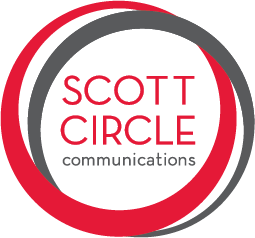Four Tips for Placing Your Op-Ed from a Top Opinions Editor
Happy New Year, and welcome to 2021! What’s on your list of resolutions – and as importantly, what’s on your clients’ lists? You can count on a desire to publish more op-eds. But that’s always easier said than done.
So, here are some tips about placing op-eds from my decade running an online opinion section:
1. Have a strong hook. Editors sift through submissions with an eye toward pieces that have to run now, knowing that those pieces are more likely to catch busy and overwhelmed readers’ attention. Pieces that can run any time will get bumped out by those that can’t.
What constitutes a compelling hook? It could be something tied to the big news of the moment; it might make news in and of itself (summarizing new research, for example); an upcoming planned event (the inauguration) or anniversary (we’re coming up on the 20th anniversary of 9/11) can make a good hook; so does cutting against or disproving conventional wisdom, possibly because the specific author makes an argument you wouldn’t expect because of their ideology or other predisposition.
A related corollary: Be a thought-leader – not a salesperson. Can your oped be summarized like this? Here’s a problem ... and as it happens, my movement/cause/product/campaign solves it! If yes, you’re trying to disguise a press release as an oped; and you’re probably going to get called on it.
2. Do your due diligence. First, make sure you know your target audience: Are you trying to persuade a relatively narrow audience knowledgeable on a specific topic or a broader generalist audience? Will that audience best be reached with a national newspaper or a niche publication? Does your topic lend itself to a major regional paper because, for example, it touches on an industry important to that area?
List your target publications and then read them. What kind of pieces have they run? Have they run something similar in the last few weeks? You’re not going to get published there but might annoy the editor by wasting her time.
You want a ranked list of targets. Remember applying to college – you had reach schools and a safety or two to go along with your dream university? That’s the kind of mix for which you should aim.
3. Pitch deliberately and patiently. Approach one publication at a time. No editor wants to invest time and energy evaluating an oped or, worse, readying it for publication only for it to run elsewhere.
Make your pitch itself brief and to the point: Highlight the piece’s argument and hook, the author, and any kind of deadline you’ve got. Then paste the piece into the body of the email – don’t send it as an attachment (many publications have rules again opening unsolicited attachments for fear of hacking).
Now comes the hard part: waiting. Remember that opinion editors often have broader portfolios than simply reading submissions: editing, soliciting, writing and so on. Over-the-transom op-eds can get triaged down to the bottom of the to-do list.
Do follow up after a couple of days (or sooner if there’s a very tight window for relevance). If you need to pitch it to another publication, make that clear, respectfully and patiently. Make the follow-up electronic – don’t call. If an editor is trying to keep several balls in the air, a follow-up call just becomes an annoying intrusion.
4. Have a back-up plan. Rejection is not the end. Work your way down your list. And don’t be afraid to solicit feedback from the editor(s) who rejected you. Nothing asked, nothing gained – you might also get some good criticism that helps you polish the piece for the next pitch. Be flexible and ready to revise, either because of feedback or because your original hook has gotten stale.
If all else fails, you are your own publication of last resort: Have a plan to post the piece on Medium, on your own blog (or client’s blog, as the case may be), or as a longer piece on a social media platform that can support it (so Facebook or LinkedIn but not Twitter).
Getting that op-ed placed still won’t be easy, but these tips will hopefully make the process clearer and more manageable. Wouldn’t it be great if everything in 2021 was like that?
Guest blogger Robert Schlesinger is president of Schlesinger Communications and former managing editor for opinion at U.S. News & World Report.
